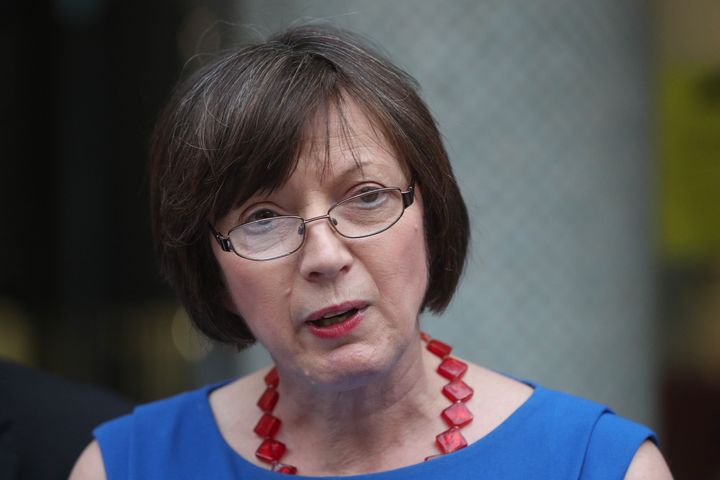
The number of people in work has reached a record high amid strong demand for workers, although the real value of pay continues to decline, new figures show.
There were just over 32.2 million people in employment in the three months to November, an increase of 102,000 on the previous quarter and the biggest total since records began in 1971.
The UK’s employment rate is now at a joint record high of 75.3%, reported the Office for National Statistics (ONS).
Shadow work and pensions secretary Debbie Abrahams said: “Whilst we welcome the overall increase in employment, the fact that real wages are falling and millions are trapped in low paid, insecure work while the cost of basic essentials soars, proves the Tories are presiding over a crisis in living standards.
“These figures mask both regional inequalities and the employment gap faced by women, disabled people and BAME groups, who have too often borne the brunt of austerity cuts.”
The Trades Union Congress (TUC) was also critical of the figures saying companies “aren’t paying on a fair share of profits to their workers”.
The Confederation of British Industry (CBI), head of employment, Matthew Percival added: “While it’s encouraging to see a return to jobs growth, and pay marginally increasing, higher inflation means living standards remain under pressure.
“With businesses already concerned about skills shortages, it’s essential that current reforms help people gain the skills that businesses need, ensuring the UK has a workforce fit for the 21st century, leading to higher productivity and pay.”
Unemployment fell by 3,000 to 1.44 million, which is 160,000 lower than a year ago.
The claimant count, which includes people on Jobseeker’s Allowance and the unemployment element of Universal Credit, increased by 8,600 last month to 832,500.
Average earnings increased by 2.5% in the year to November, unchanged from the previous month, although pay is still growing at less the rate of inflation.
The number of people classed as economically inactive, including students, those on long-term sick leave, taken early retirement or who have given up looking for work, fell by 79,000 to 8.7 million, the lowest since the winter of 2000-01.
Job vacancies were up by 17,000 to a record 810,000.
TUC general secretary Frances O’Grady said: “Companies have been reporting healthy profits for the last year, but they are not passing on a fair share of profits to their workers.
“The Government must raise the minimum wage to £10 as quickly as possible, and hardworking teachers, midwives and other public servants must get a proper pay rise after years of artificial pay restrictions.”
Stephen Clarke, policy analyst at the Resolution Foundation think tank, said: “There is evidence that employment has become more volatile as businesses wrestle with uncertainty and a tighter labour market.
“Recent monthly figures have seen something of a rollercoaster in the employment rate. Particularly strong November figures driving today’s welcome overall change, while we know that private sector employment actually fell slightly between June and September.”
Anna Mitchell, director at The Prince’s Trust said: “Youth unemployment has risen this quarter, which is always a cause for concern, but for many young people in the UK the challenges stretch beyond simply being out of a job.”

Suren Thiru, head of economics at the British Chambers of Commerce, said: “The rise in employment and continued decline in unemployment is further evidence that the UK labour market remains a key source of strength for the UK economy.
“It is possible that UK labour market conditions may cool over the next year, as sluggish economic growth and Brexit uncertainty take their toll on firms’ recruitment intentions.
“However, we expect that while the UK unemployment rate will drift up to a peak of 4.7% this year, it will remain significantly below the long-run average.”
ONS statistician David Freeman said: “With the employment rate returning to a joint record high and the number of vacancies setting a new record, demand for workers clearly remains strong.
Moreover, economic inactivity is at its lowest since the winter of 2000-01.
“Nevertheless, inflation remains higher than pay growth and so the real value of earnings continues to decline.”
The rise in employment has been driven by full-time jobs, with the number of self-employed falling by 82,000 in the latest quarter to 4.77 million, the biggest cut since 2004.
Economic inactivity has fallen by 167,000 over the past year, with a big fall among the long termsick.
Esther McVey, Secretary of State for the Department of Work and Pensions, said: “Today’s figures show that more people are getting into work than ever before, meaning people are able to provide for their families and build a better future for themselves and their children.
“Nearly half a million more people have the security of a job and a pay packet than this time last year and wages are rising.”
• The number one single in the charts the last time economic inactivity was so low was Bob The Builder.
• The ONS cautioned that the claimant count may be providing a misleading representation of changes in the labour market because of the impact of the roll-out of Universal Credit.
